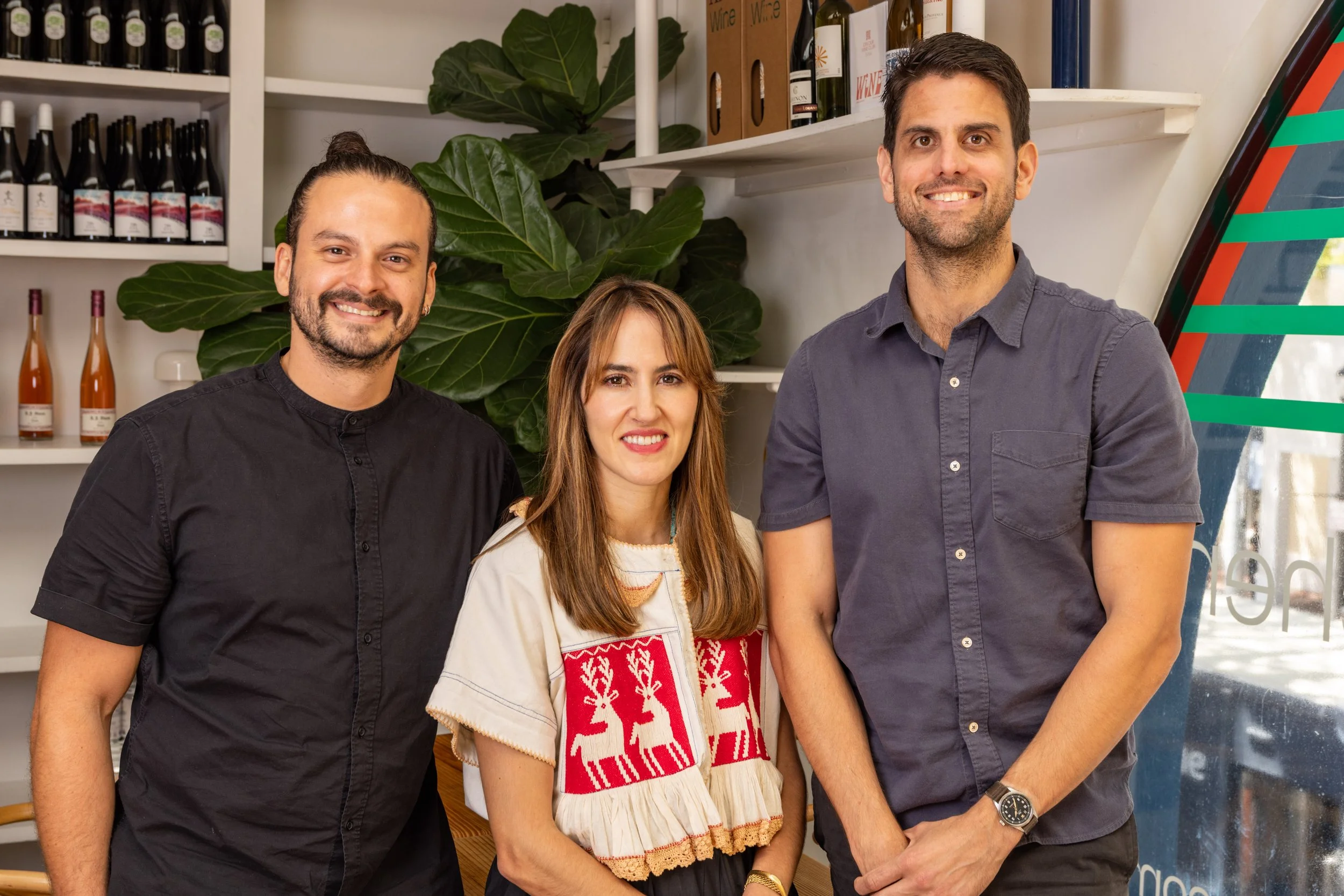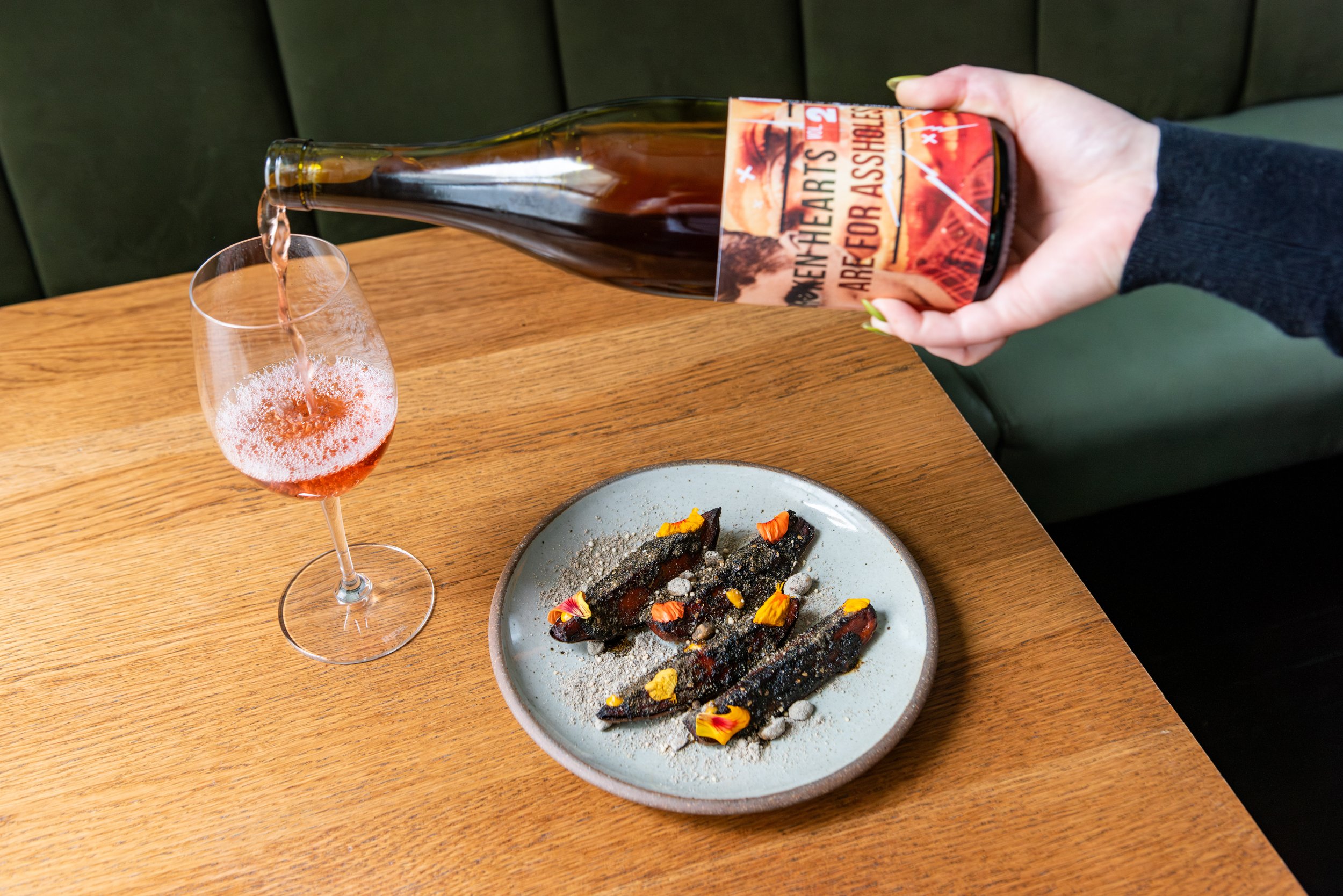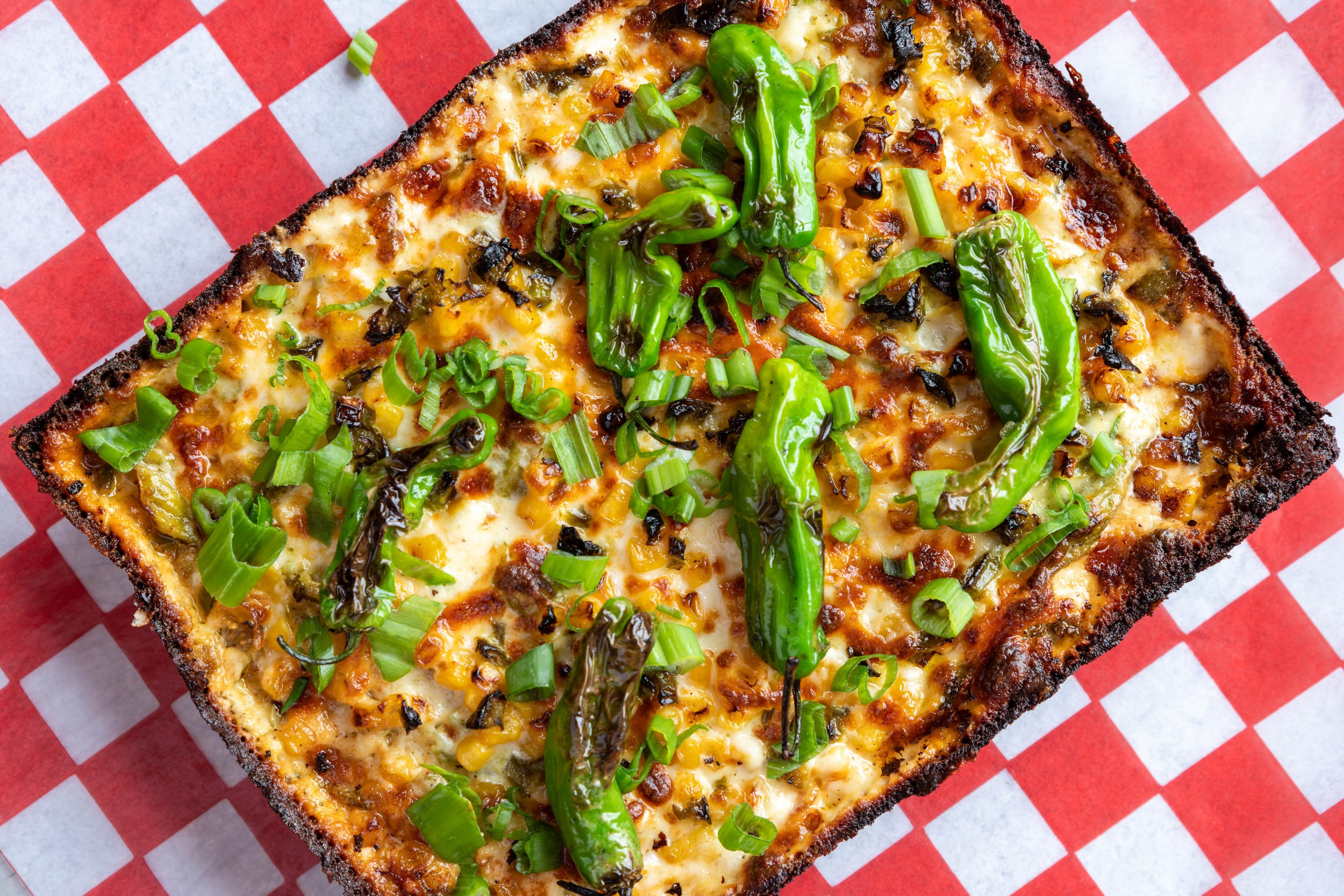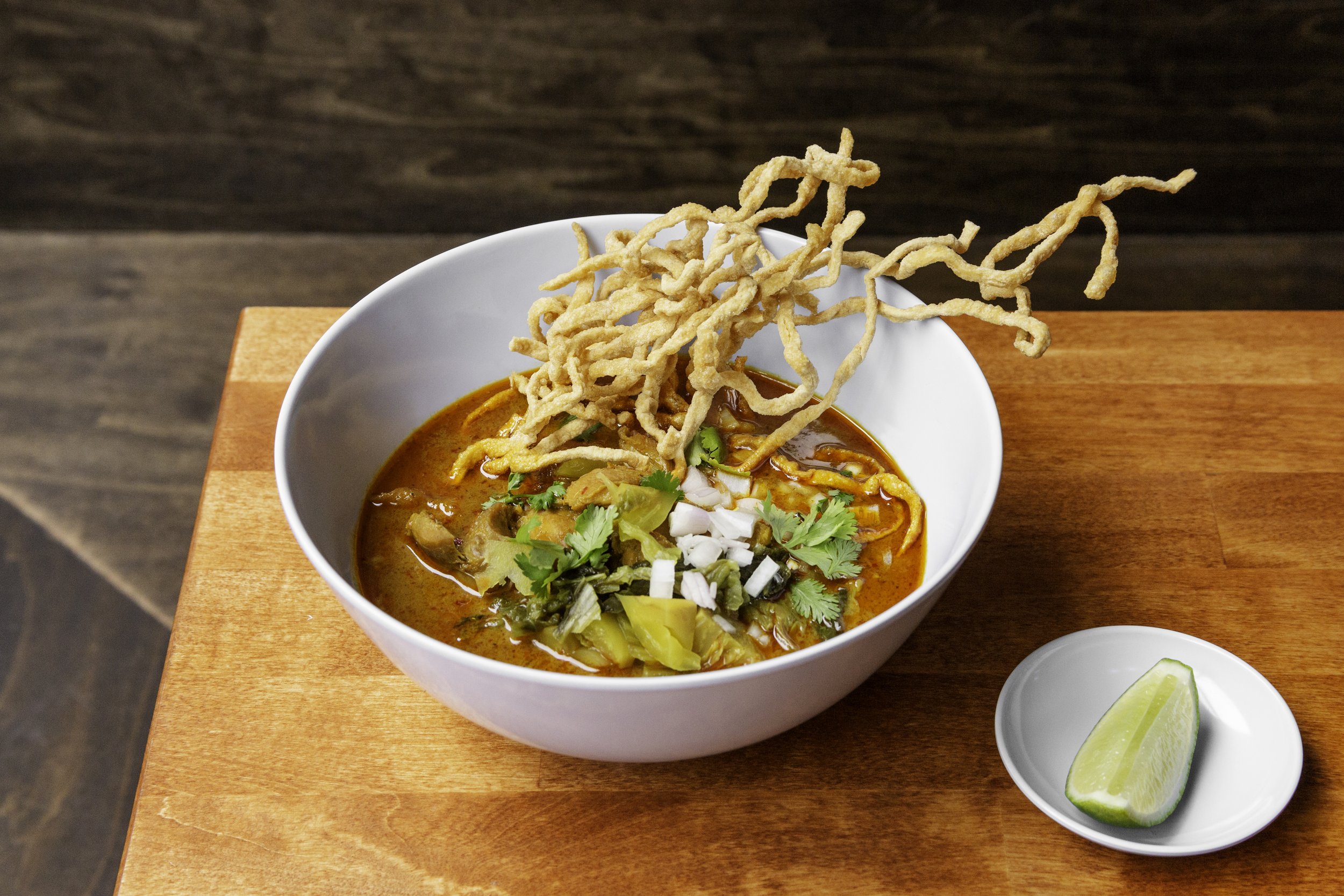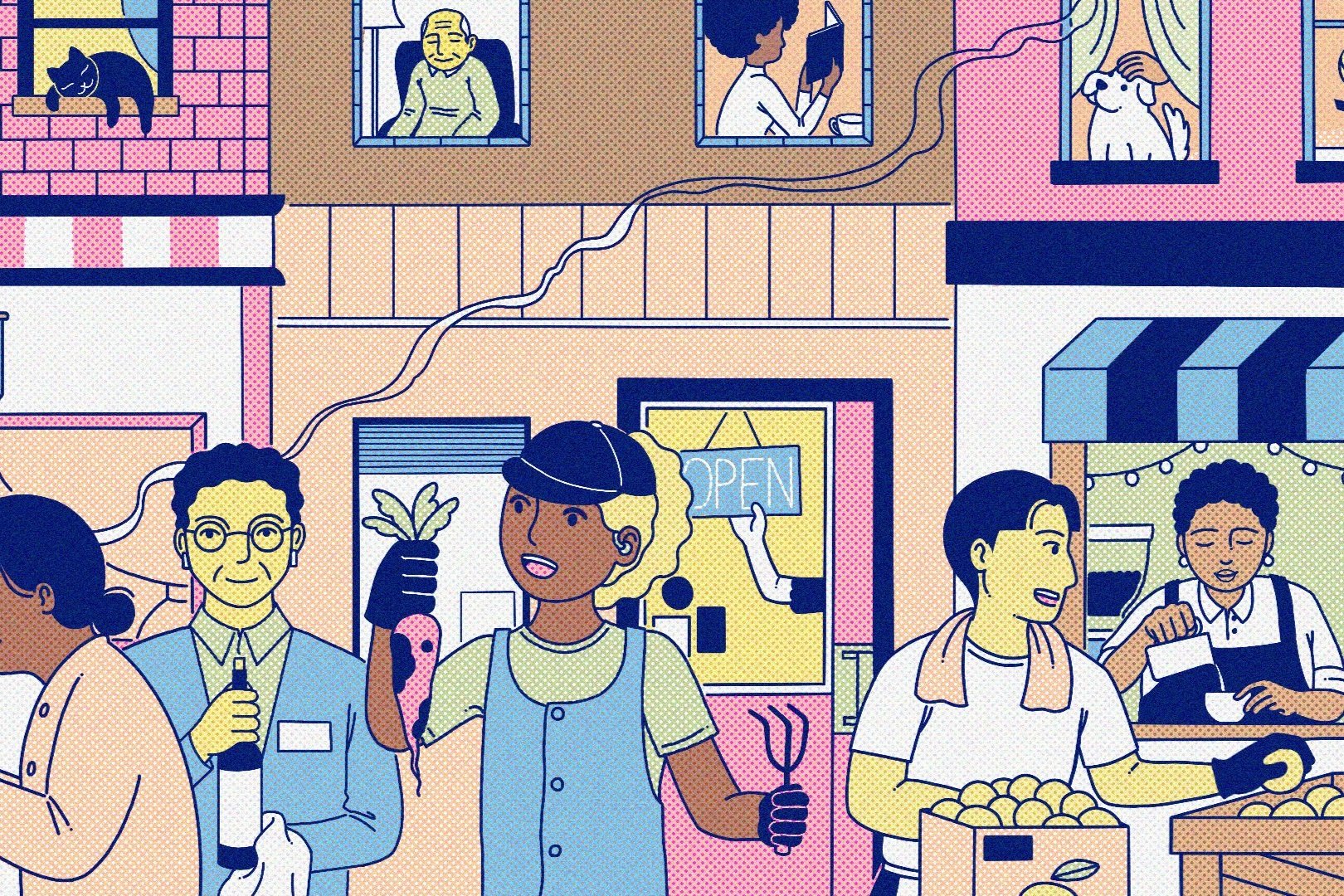Investing in Chinatown
A new generation of chefs are working to bolster an ever-evolving neighborhood
Stepping into New York City’s Chinatown, it’s immediately obvious that the neighborhood has largely been woven together by its vibrant culinary community—the scent of steaming bao buns and rice noodles waft through the air as shoppers move with purpose around the many specialty markets to find fresh fish, bok choy, and persimmons.
Many of the neighborhood's chefs remember a childhood marked with afternoons spent in those markets, commuting in from other parts of the city to visit grandparents, reaching up towards sweet shops where custard tarts lay waiting to be consumed. Walking through the neighborhood today, a number of once long-standing shops and restaurants are now shuttered, and the community continues to reel from the layered effects of the two-plus years of utter chaos that were the COVID-19 pandemic. Amidst that chaos, a new guard of chefs and restaurateurs has emerged, prepared to advocate for the neighborhood that raised them.
Chef Zhan Chen of Potluck Club | PhotoS: Will Blunt
Braised Short Rib, Delicata Squash, Szechuan Peppercorn, Sweet Soy, Scallion
At 2:40pm every weekday, the daily dismissal of P.S. 124 Yung Wing, the public elementary school Chef Zhan Chen of Potluck Club attended, adds the sound of hungry children to the hustle and bustle of the neighborhood. Chen maintains that while Potluck Club is technically located slightly north of the neighborhood’s borderlines, it is firmly a Chinatown restaurant. It helps that every partner involved in the establishment grew up there. Easter eggs of a Chinatown childhood are scattered throughout the interior—especially within a salvaged vending machine which holds household nostalgia triggers, from Tiger Balm and Vitasoy boxed drinks, to Maneki-neko and Baoding balls.
Housed in a former sausage factory that required a full renovation, Potluck Club sources the majority of its ingredients, from eggplant to rice rolls, down the street from Chinatown purveyors. Chen says that he hopes the future of the Chinatown culinary scene will see younger chefs carrying on what the older generation started.
“I hope in creating this restaurant and creating this space, that it can show anybody that we can do more within the Chinatown community. I hope it stays forever, and I hope it never changes,” says Chen. He adds, “well, change is a good thing sometimes, but I hope Chinatown never fades away.”
Thanks to a new wave of chefs paying homage to their culture, the longstanding businesses in Chinatown, and the numerous philanthropic organizations focusing on the Chinatown community, the neighborhood is unlikely to be going anywhere anytime soon. Many of these chefs are dedicated to giving back, working with organizations to aid the elderly, the impoverished, and other small local businesses.
“We saw there was a lack of resources that catered specifically to the Chinatown community. Upon founding a non-profit, we really wanted to provide help to small business owners, but it was also important to amplify the message that we need the uniqueness of Chinatown. When you speak about Chinatown, it’s not just small businesses, but it's also the families and the 30,000 seniors that are still living there,” says Winston Chiu, the founder of More Than a Meal and co-founder of catering company Bonbite.
When Chiu founded More than a Meal, which connects New Yorkers to no-cost meals from nearby restaurants, it joined the ranks of local charities that help provide food, information, and support to those in need—Welcome to Chinatown, Send Chinatown Love, and Heart of Dinner among them.
Chef Eric Huang of Pecking House
Heirloom Butter Bean Salad, Bell Pepper, Shiitake Mushroom, Sesame Vinaigrette
From across the bridge in Brooklyn, chefs like Eric Huang of Pecking House also make a concerted effort to make a positive impact in Chinatown, such as working with nonprofit APEX for Youth, and donating food through Heart of Dinner. “I participate in mentoring because it’s something I really could have used when I was a youth. There are many young students who live in Chinatown whose parents are very busy working and unable to provide them much guidance in their schooling and personal lives.”
"Chinatown has among the lowest education and highest poverty rate in Manhattan,” says chef and owner Huang, who founded Pecking House after his family’s restaurant in Queens shuttered due to the pandemic. “There are a lot of underserved youths there that we want to mentor. That's always at the forefront of our mind. That's where we come from. It's underserved, and it's what we care about."
In Williamsburg, Bonnie’s also seeks to shine their own light on Chinatown culture and Cantonese cuisine, all thanks to chef and co-owner Calvin Eng’s childhood spent exploring the neighborhood in search of rice noodles and jerky.
“My maternal grandparents lived in Chinatown for almost 60 years. It's where my mom and her siblings grew up when they came over here from Hong Kong,” says Eng. “Because we lived in Bay Ridge, it wasn’t easy to find a lot of the ingredients that my mom wanted to buy, so we would head into Chinatown to bulk up for the week. She had a spot for everything she wanted.”
Chef Calvin Eng of Bonnie’s
Cha Siu Steamed Pork Ribs, Chinese Hot Mustard, Bread and Butter Pickles, Sesame Milk Bun
While Eng is aware of a movement towards more chef-driven concepts in the neighborhood today (and is a part of that movement in Williamsburg), he still remembers frequenting traditional Chinatown establishments that are still open to this day, such as Mei Lai Wah, known for its large char siu baos. He and his grandfather would venture there for steamed beef rice rolls, served on disposable paper boats, which Eng would scrape hungrily with his plastic fork to savor every last bit.
Today, Eng serves his own steamed rice rolls at Bonnie’s. It’s a 360 degree moment for the chef, who now sources items for his own restaurant from Chinatown, including rice rolls from Kong Kee on Grand Street, and sesame milk buns for their ‘McRib’ from Nice One Bakery on Bayard; the same street his grandparents used to live on.
These chefs—along with the combined efforts of their community within the neighborhood and beyond—are breathing new life into Chinatown one person, and one meal, at a time.








